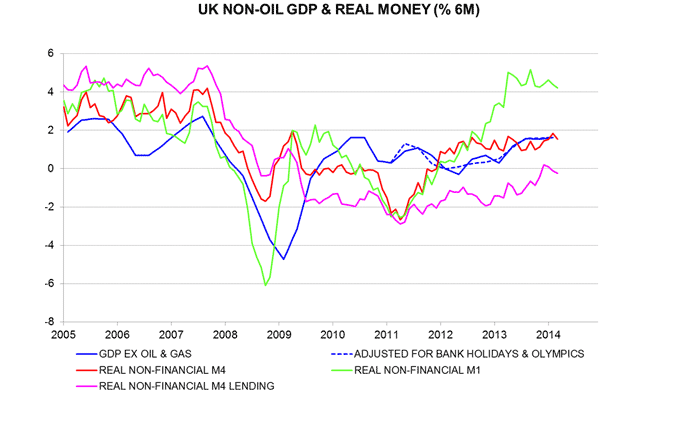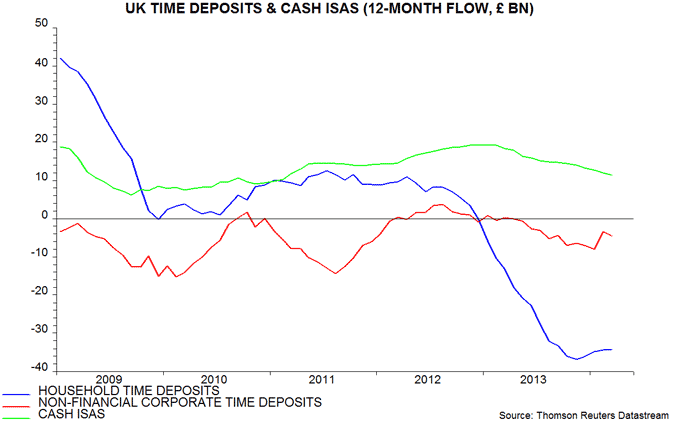UK monetary conditions excessively loose
UK narrow money continues to expand rapidly, signalling stable, solid economic growth through late 2014. Households, meanwhile, are still withdrawing large sums from savings accounts in response to low deposit interest rates. This outflow is a direct consequence of Bank of England policy and may be contributing to excessive consumer spending and financial speculation / asset bubbles, with negative medium-term economic consequences.
Six-month expansion of real narrow money* moved from moderate to strong between mid-2012 and spring 2013, correctly signalling an upshift in economic growth from the start of last year, allowing for the usual half-year lead. It has since stabilised at a robust pace, with today’s March result continuing the trend – see chart. Quarterly GDP growth has been 0.7-0.8% in each of the last four quarters and is likely to be similar over the remainder of 2014.
Real broad money** expansion is also stable but at a subdued level by past standards. This has not prevented strong economic growth because the demand to hold broad money has fallen in response to low deposit interest rates.
Households, for example, put only £435 million into cash ISAs in March, the lowest since May 2011, while withdrawing £1.9 billion from time deposits. Such deposits have suffered a cumulative outflow of £34.2 billion over the last 12 months, equivalent to about 3% of household disposable income over the period – second chart.
Real broad credit remains stagnant, providing further proof of its irrelevance for short-run economic prospects. Arranged but undrawn credit facilities, however, have been rising, suggesting a gradual lending revival.
A monthly fall of 0.1% in the Bank’s favoured broad money measure, M4ex, may attract attention. This was, however, caused by the Debt Management Office issuing Treasury bills and borrowing in the repo market to finance a large gilt redemption. This operation is temporary and M4ex will expand as the borrowing is unwound.
*Real non-financial M1, i.e. currency and overnight deposits of households and non-financial firms deflated by consumer prices.
**Real non-financial M4.



Reader Comments